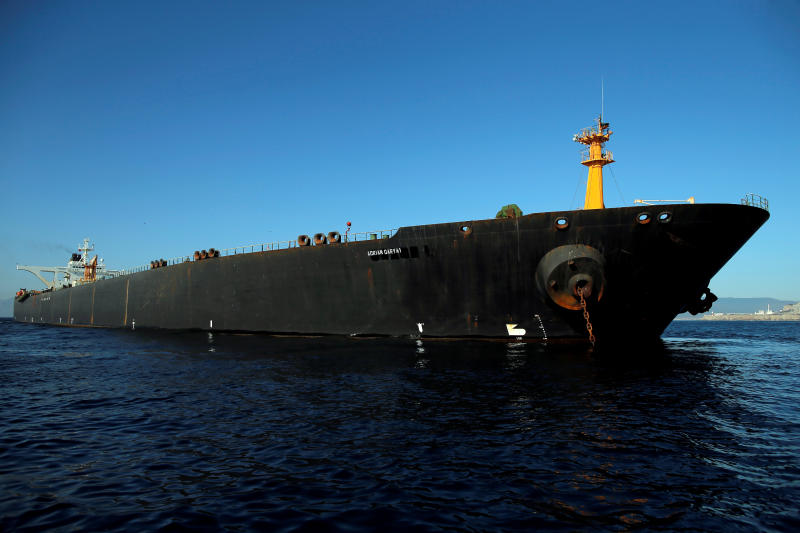Iranian oil tanker pursued by US says it is going to Turkey
Sign up now: Get ST's newsletters delivered to your inbox

The crew of the Adrian Darya 1, formerly known as the Grace 1, updated its listed destination in its Automatic Identification System to Mersin, Turkey, a port city in the country's south and home to an oil terminal.
PHOTO: REUTERS
Follow topic:
DUBAI (AP) - An Iranian-flagged oil tanker pursued by the US amid heightened tensions between Teheran and Washington changed its listed destination to a port in Turkey early Saturday (Aug 24) after Greece said it wouldn't risk its relations with America by aiding it.
The crew of the Adrian Darya 1, formerly known as the Grace 1, updated its listed destination in its Automatic Identification System to Mersin, Turkey, a port city in the country's south and home to an oil terminal.
However, mariners can input any destination into the AIS, so Turkey may not be its true destination.
Mersin is some 200km north-west of a refinery in Baniyas, Syria, where authorities alleged the Adrian Darya had been heading before being seized off Gibraltar in early July.
Iranian state media and officials did not immediately acknowledge the new reported destination of the Adrian Darya, which carries 2.1 million barrels of Iranian crude oil worth some US$130 million (S$180 million). Nor was there any immediate reaction from Turkey, whose President Recep Tayyip Erdogan deals directly with Teheran and Russia over Syria's long war.
The ship-tracking website MarineTraffic.com showed the Adrian Darya's position as just south of Sicily in the Mediterranean Sea. At current speeds, it estimated the Adrian Darya would reach Mersin in about a week.
The State Department did not immediately respond to a request for comment.
The head of Iran's powerful Revolutionary Guard, General Hossein Salami, said Saturday it had successfully test-fired a "new missile" a day earlier, but did not elaborate on the type of weapon, according to the semi-official Tasnim news agency.
Iran's President Hassan Rouhani on Thursday debuted an Iran-made air-defence missile system, the Bavar-373.
In June, Iran shot down an American surveillance drone in the Strait of Hormuz. President Donald Trump came close to retaliating but called off an airstrike at the last moment.
The Adrian Darya's detention and later release by Gibraltar have added fuel to the growing tensions between Washington and Teheran, after Mr Trump unilaterally withdrew America from Iran's 2015 nuclear deal with world powers over a year ago over concerns about Iran's ballistic missile programme and regional influence.
In the time since, Iran lost billions of dollars in business deals allowed by the deal, as the US re-imposed and created sanctions largely blocking Teheran from selling crude oil aboard, a crucial source of hard currency for the Islamic Republic.
In US federal court documents, authorities allege the Adrian Grace's true owner is Iran's Revolutionary Guard, a paramilitary organisation answerable only to Supreme Leader Ayatollah Ali Khamenei.
The US declared the Guard a foreign terror organisation in April, the first time America named a military force of a nation as such, giving it the legal power to issue a warrant for the vessel's seizure. However, that would require another nation to acknowledge the writ.
The Adrian Darya had put its intended destination as Kalamata, Greece, even though the port did not have the infrastructure to offload oil from the tanker. The State Department then pressured Greece not to aid the vessel.
Meanwhile, Iran continues to hold the British-flagged oil tanker Stena Impero, which it seized in a commando-style raid July 19 after the taking of the Adrian Darya. Analysts suggested the release of the Adrian Darya would see the Stena Impero let go, but that has yet to happen.

